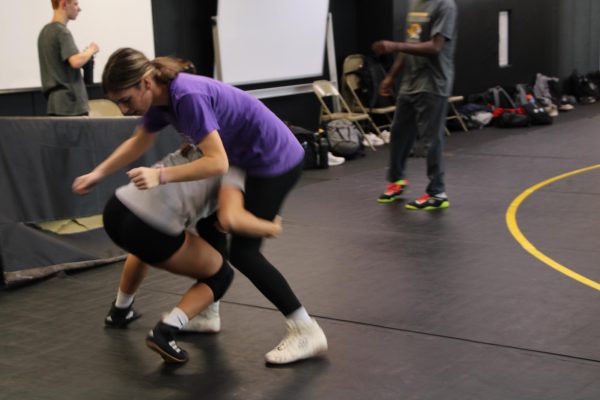Are Two Hall Passes Enough?
E-hallpass undergoes new changes this year
As the 2022-2023 school year has just recently begun, there have been new procedures and expectations set in place for students across OHS. Among these implementations, one has significantly struck the most controversy throughout the student body: the changes to e-hallpass.
For some background, e-hallpass was introduced to OHS students two years ago when COVID-19 was at its peak. Its purpose was to limit the number of people in the halls at one time and to manage contact tracing across the building. Since introduced, e-hallpass has given students unlimited passes to be able to travel the building to do whatever they needed, whether that was to use the restroom, get a drink, travel to another teacher, etc. But now, in the 2022-2023 school year, all that has changed.
Many OHS students in different grades shared their feelings on the topic, and it seems safe to say that a majority of the student body is against the new bathroom policies for many similar reasons:
- “I think for people who are at school for a whole day, it is unfair to only get two opportunities a day,” Tess McConnell (12) said. “It feels like a lack of trust.”
- “The fact that we, as humans, are limited to when we can and cannot use the restroom is absurd…Everyone uses the restroom and should when we need to,” Addison Tish (11) said.
- “[It] makes me feel like using the bathroom is a privilege and not a natural part of my day,” Dalmar Campara (12) said.
Assistant principals Dana Skrabacz and Michael Wegener shared their decision-making process for this new limit. They explained that there were many issues with hall traffic last year and the amount of people in bathrooms at one time. Their main issue, though, was the length of time that students would be out of class. So with these factors in mind, administrators ultimately thought these changes would be most beneficial to students’ education and getting the most out of their school time. They both also make it a point that there are other times of the day in which students can do what they need to without a pass. This may be the case for some students, but other students, like senior Ellie Sanders, find it difficult to balance this time.
“Teachers and principals tell us to use the bathroom during lunch and passing period, but with that in mind, all of the students use the bathroom during these times and it makes me tardy for class as I wait in the lines for an empty stall,” Sanders said. “Plus, I have no time to eat my lunch because I wait in line to use the bathroom during lunch. I can’t make it through the day with only two passes.”
Not only do administrators mention the other times of the day that students may use the restroom without a pass, but they also mentioned that even if a student runs out of passes for the day, a student is still able to use the restroom. But there is a catch to that, for that student will have to be escorted to and from wherever they are going, most likely by an administrator. With that in mind, you have to factor in the time it takes for a teacher to call down to get an escort, which takes unnecessary time away from the teachers, administrators and students.
After conversing with administration and the student body, I was able to see both points of view, but ultimately I still stand with the students. I think these new implementations are very inconvenient for students and teachers. The process it involves to make and approve a pass, along with the many limitations and restrictions are time-consuming. Using the restroom should be a human right, for it is something that every single living person does, but it is now treated as a privilege which students have to earn. With the idea that high school is the time in which we are preparing for adulthood, these new restrictions feel as though administration is doing the complete opposite of that.
I see the factors of consideration that led administration to take this kind of action, but I believe that there were other, more convenient and less extreme, solutions. For example, instead of only two passes for the day, they could give students three or four to be able to have more opportunities. Another solution would be to limit students to a certain amount of time gone for each pass before administration gets involved with disciplinary action. There are so many other more rational solutions to the issues that the school faced with students abusing e-hallpass in previous years. In all, I am disappointed in administration when it comes to the solution for this situation and the measures to which they resorted.

What's up! My name is Katie Schroeder, and I am a senior this year at OHS. This is my first year on the newspaper staff and my third year on the broadcast...







